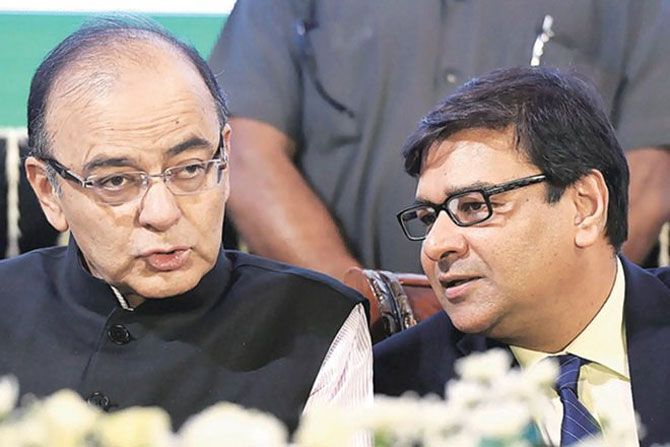Patel, who headed the RBI from September 2016 till his sudden resignation in December 2018, says in his book thta the government seemed to lose enthusiasm for the new bankruptcy law in the middle of the year he left the central bank.
Though Patel does not name anybody in the book, the mid-2018 period he refers to is the time when Piyush Goyal held temporary charge of the finance ministry between May and August.

The move to dilute the new bankruptcy law caused disagreements between the government and the central bank, former Reserve Bank of India (RBI) governor Urjit Patel says in his book Overdraft: Saving the Indian Saver, released on Friday.
Patel, who headed the RBI from September 2016 till his sudden resignation in December 2018, says the government seemed to lose enthusiasm for the legislation in the middle of the year he left the central bank.
The rift centred around a February 2018 circular issued by the RBI, which forced banks to immediately classify borrowers as defaulters when they delayed repayments, barred defaulting company founders from trying to buy back their firms during insolvency auctions, and push them into bankruptcy if a resolution timeline wasn’t met.
In a chapter titled ‘The Empire Strikes Back’, Patel writes the disposition with respect to the insolvency law or, more generally, in the conviction in the pathway, perceptibly changed in mid-2018. Instead of buttressing and future-proofing the gains thus far, an atmosphere to go easy on the pedal ensued.
Though Patel does not name anybody in the book, the mid-2018 period he refers to is the time when Piyush Goyal held temporary charge of the finance ministry between May and August.
“Until then, for the most part the finance minister and I were on the same page, with frequent conversations on enhancing the landmark legislation’s operational efficiency; we sought feedback on changes to preserve the principles that formed the bedrock of the IBC; which tweaks were likely to work; and where resource improvements could help; etc. I suspect the government may have felt that the deterrence effect -- ‘future defaulters beware, you may lose your business’ -- of the IBC had been achieved, and resolute follow-up to help complete the task was, therefore, unwarranted,” he writes.
But deterrence, Patel writes in the book published by HarperCollins, “works only if defaulters -- current and potential -- face economic consequences within a (reasonable) timeframe; otherwise we are in danger of a relapse to the days of the discredited Securitisation and Reconstruction of Financial Assets and Enforcement of Security Interest Act, 2002 and Recovery of Debts Due to Banks and Financial Institutions Act, 1993.”
Patel’s comments offer a peek into a tussle between the RBI and the government, which led eventually to a U-turn when the Supreme Court last year struck down the RBI’s February circular. The decision “made the insolvency regime vulnerable, possibly brittle,” Patel wrote, and warned that subsequent changes risk reversing gains from efforts to clean one of the world’s largest bad-loan piles.
“Since the time-bound threat of insolvency application is not credible anymore, it is unclear what threat points will compel resolution in 180 days (or, for that matter, even 365 days),” Patel writes.
Patel also says, in early 2019, the criteria were relaxed to ‘graduate’ five loss-making banks out of the prompt corrective action, and recapitalisation of these PCA banks helped them meet the criterion on net non-performing assets (NPAs).
In addition, extension and augmentation of forbearance for medium and small enterprise loans were granted at the same time. At the upper end of this forbearance (loans of Rs 250 million), businesses with annual turnover of up to several hundred crores were beneficiaries. “How does this square up with fairness in a country where the average per capita annual GDP is about Rs 150,000”? he asks in his book.
“We did not have to wait long for the camel’s nose to appear under the tent, forbearance to commercial real estate (living-dead borrowers) was granted in February 2020,” he pointed out.











